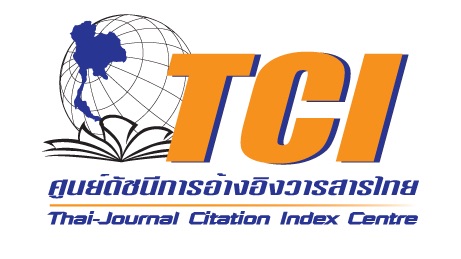A study of the Mixing of English in Thai Appeared on Talk with Toey Variety Show from April to June, 2020
Keywords:
Mixing Language, Part of SpeechAbstract
This research aimed to study the types of English mixing in Thai language and to divide the categories of the mixing of English in Thai appeared on Talk with Toey variety show from April to June, 2020. The researcher collected data from 10 parts of the content in the host conversations. The data was analyzed by using the mixed language theory framework. The study was found that moderator and guests used 119 mixing words in English. They were divided into 73 words of most common nouns or 61.34 percent, followed by 33 verbs or 27.73 percent, 12 adjectives or 10.08 percent, and 1 adverb or 0.84 percent, respectively, However, the researcher did not find the use of pronoun, conjunctions and interjections. According to the study of English mixing in the Talk with Toey variety show, it reflected the type of English mixing in Thai conversations that did not always correspond to the functions and types of words in Thai, which were classified into 4 groups: nouns switched over verbs, nouns switched over adverbs, verbs switched over nouns, and verbs switched over adverbs. In addition, the results of classification of English words mixing in Thai from this variety show. It was found that most of the use of English mixing in Thai words related to the lifestyle for 48 words and the least related to technology for 2 words. In conclusion, the use of mixing English with Thai language tends to increase the number of words in Thai and can make people who use mixing words with English will be able to communicate more conveniently.
References
กำชัย ทองหล่อ. (2550). หลักภาษาไทย. (พิมพ์ครั้งที่ 2). กรุงเทพฯ: อมรการพิมพ์.
ดียู ศรีนราวัฒน์. (2542). ภาษากับสังคม. กรุงเทพฯ: ภาควิชาภาษาศาสตร์ คณะศิลปศาสตร์ มหาวิทยาลัยธรรมศาสตร์.
นารีรัตน์ สมิงแก้ว. (2545). การปนภาษาอังกฤษในข่าวบันเทิงในหนังสือพิมพ์ไทยรายวัน( วิทยานิพนธ์ศิลปศาสตรมหาบัณฑิต สาขาวิชาภาษาศาสตร์). กรุงเทพฯ: มหาวิทยาลัยธรรมศาสตร์.
บุษกร พรมสะอาด. (2553). ทัศนคติของนักศึกษาหญิงมหาวิทยาลัยธรรมศาสตร์ ต่อนิตยสาร Elle นิตยสาร Cleo และนิตยสาร Cosmopolitant. (วิทยานิพนธ์
วารสารศาสตรมหาบัณฑิต สาขาวิชาวารสารศาสตร์และสื่อมวลชน). กรุงเทพฯ: มหาวิทยาลัยธรรมศาสตร์.
พัชรี โภคาสัมฤทธิ์. (2550). การแปลอังกฤษเป็นไทย : ทฤษฎีและเทคนิค. (ม.ป.ท). นนทบุรี: มหาวิทยาลัยสุโขทัยธรรมาธิราช.
วิไลศักดิ์ กิ่งคำ. (2550). ภาษาต่างประเทศในภาษาไทย. กรุงเทพฯ: มหาวิทยาลัยเกษตรศาสตร์.
อนันต์ อ่วมศาสตร์ และเนาวรัตน์ อ่วมศาสตร์. (2540). ลักษณะภาษาไทย. กรุงเทพฯ:ไทยวัฒนาพานิช.
Cambridge, (2020). Cambridge dictionnaries: Cambridge University Press.Retrieved 27 October, 2020, from https://dictionary.cambridge.org
Downloads
Published
How to Cite
Issue
Section
License

This work is licensed under a Creative Commons Attribution-NonCommercial-NoDerivatives 4.0 International License.







